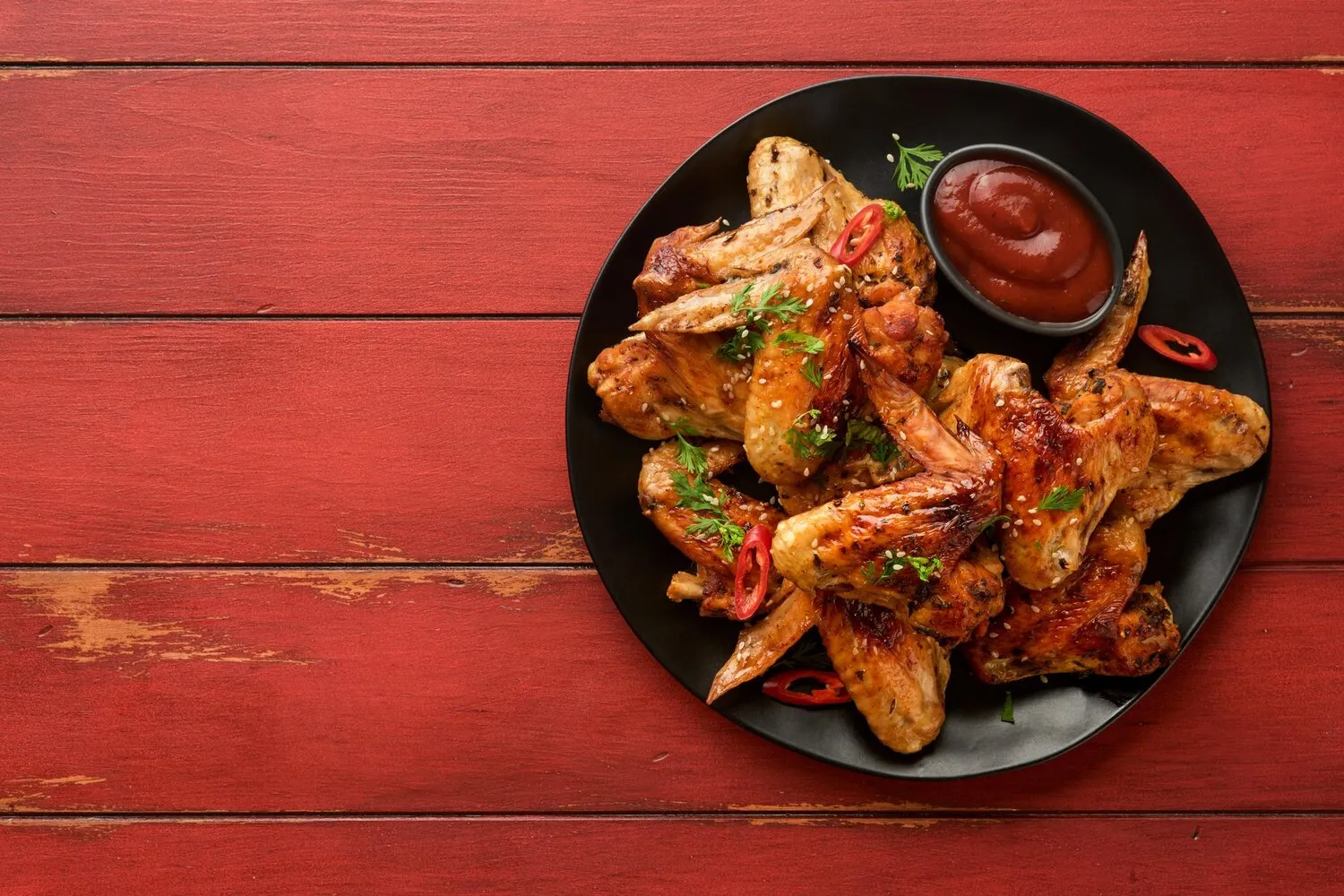
Traditional Wings
Classic bone-in chicken wings served with your choice of dipping sauce.
Nutrition Facts
* The % Daily Value (DV) tells you how much a nutrient in a serving of food contributes to a daily diet. 2,000 calories a day is used for general nutrition advice.
Chicken wings, once considered a less desirable part of the chicken, were popularized in 1964 at the Anchor Bar in Buffalo, New York. Teressa Bellissimo created the now-iconic Buffalo wing as a late-night snack for her son and his friends. This marked the birth of the modern chicken wing craze.
Traditional wings have become a ubiquitous part of American sports culture and casual dining, frequently enjoyed during gatherings, game nights, and as a social snack.
Super Bowl Staple
Wings are a massively popular food choice for Super Bowl parties, with millions of wings consumed annually during the event.
Casual Dining and Bars
Wings are a standard menu item in many casual dining restaurants, sports bars, and pubs across the United States.
Wing Eating Contests
Wing eating contests are a popular form of competitive eating, with participants vying to consume the most wings in a set amount of time.
Traditional wings offer a savory and often spicy flavor profile, enhanced by crispy skin and a juicy interior. The experience is completed with a cool, creamy dipping sauce to balance the heat.
The primary flavor comes from the chicken itself, enhanced by seasoning applied before or after frying or baking. Common seasonings include salt, pepper, garlic powder, onion powder, paprika, and cayenne pepper. The sauce, a crucial element, can range from mild to extremely hot and can feature flavors like buffalo sauce (vinegar-based with cayenne pepper and butter), barbecue sauce (sweet and smoky), or various Asian-inspired glazes. The dipping sauce, often ranch or blue cheese dressing, provides a cool and tangy contrast to the wings.
Dry the Wings
Patting the wings completely dry before seasoning and cooking helps achieve a crispier skin.
Proper Cooking Temperature
Whether frying or baking, maintaining the correct temperature is crucial. For frying, aim for 350-375°F (175-190°C). For baking, a higher temperature around 400-425°F (200-220°C) helps to render the fat and crisp the skin.
Sauce Application
Toss the wings in sauce immediately after cooking while they are still hot to ensure the sauce adheres properly.
Explore additional Wings dishes and restaurants
Explore WingsDiscover top dining spots and culinary experiences in Aurora.
Explore AuroraLearn more about the food culture, restaurant scene, and culinary heritage of United States.
Explore United States